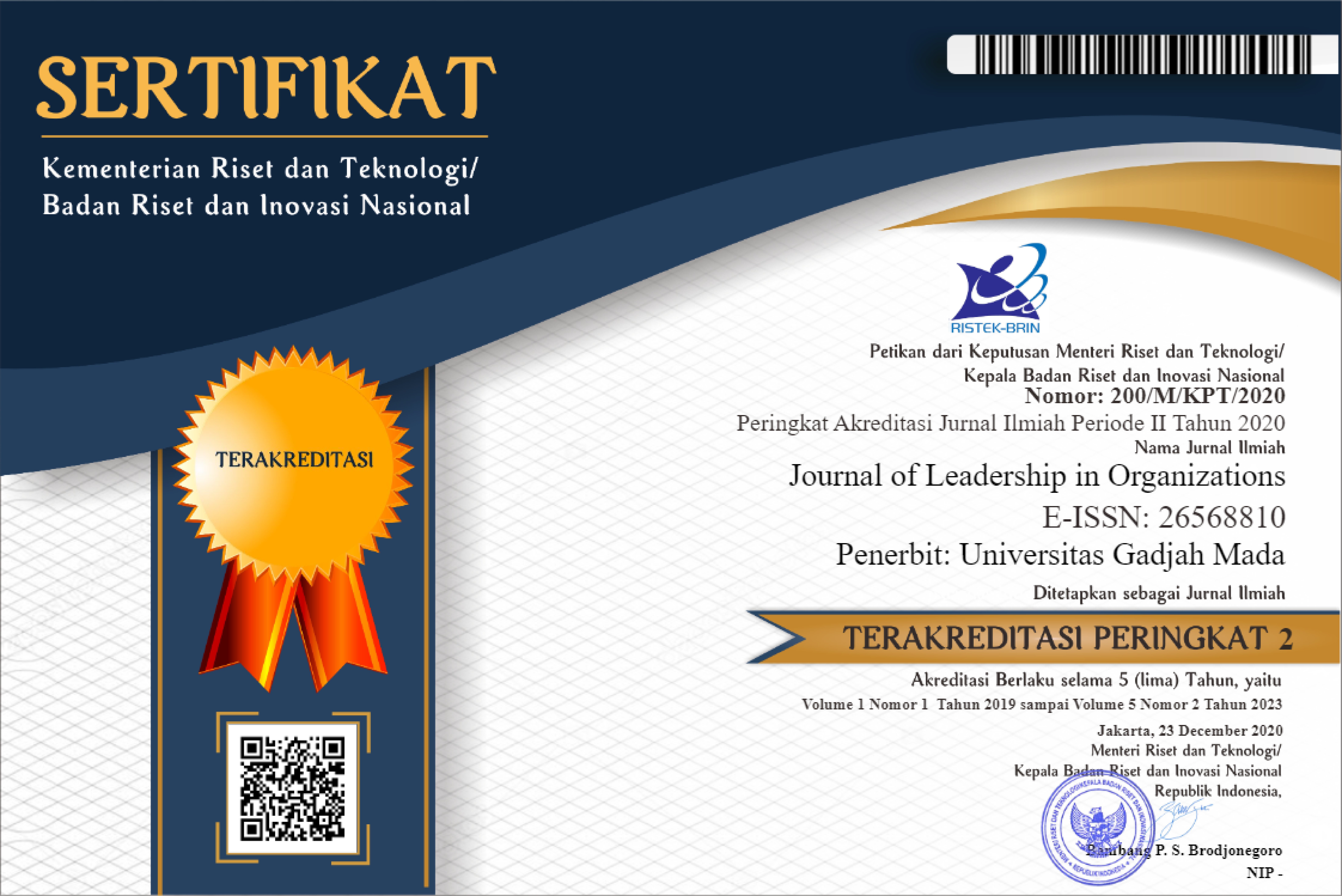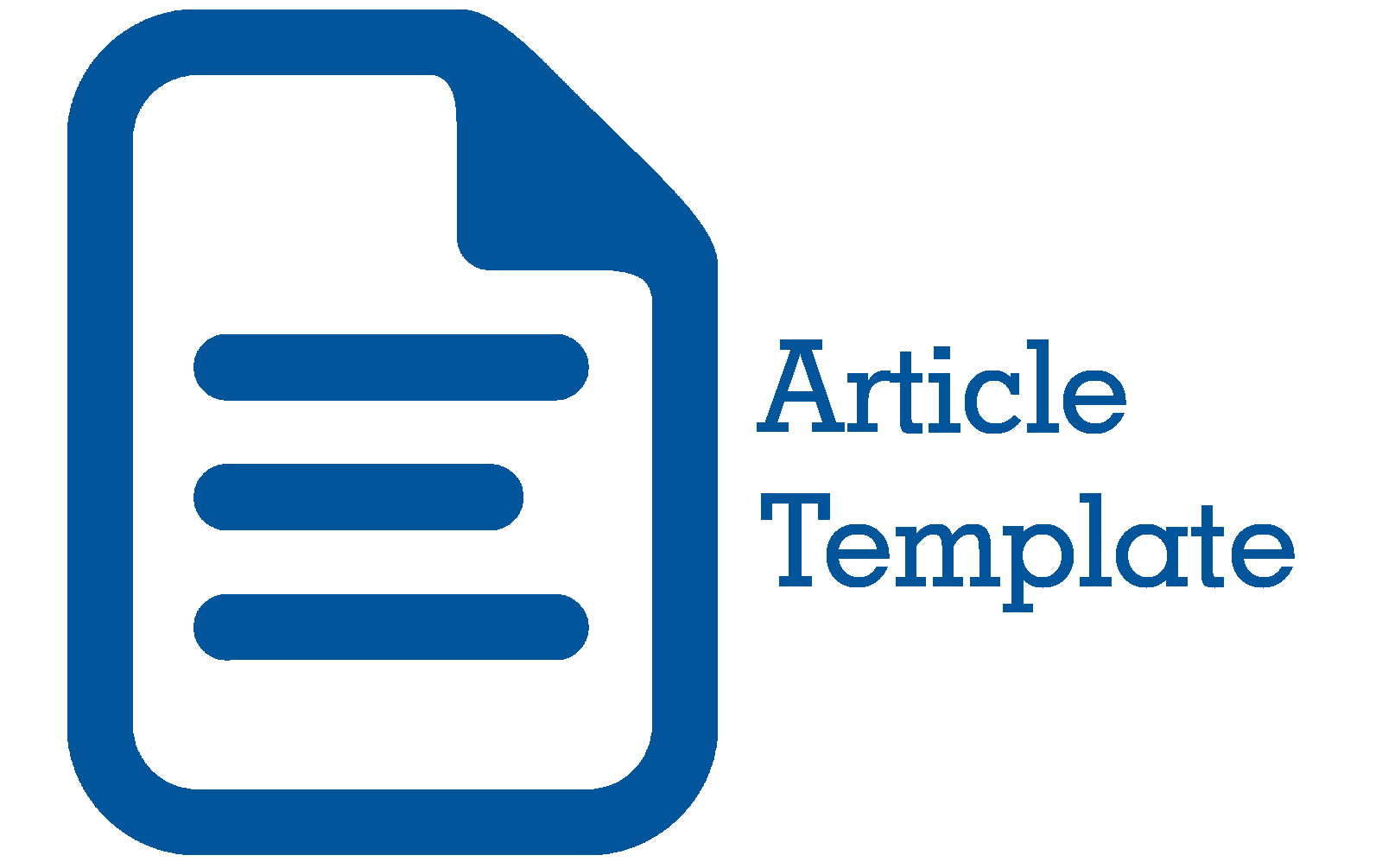Leadership Style, Work Motivation, Work Stress, and Employee Performance: a Case Study of a Hospital
Adi Lukman Hakim(1*), Erna Nur Faizah(2), Ninik Mas'adah(3), Fajar Rizki Widiatmoko(4)
(1) Faculty of Economics and Business, Universitas Muhammadiyah Lamongan, Lamongan, 62218, Indonesia
(2) Faculty of Economics and Business, Universitas Muhammadiyah Lamongan, Lamongan, 62218, Indonesia
(3) Faculty of Economics and Business, Universitas Muhammadiyah Lamongan, Lamongan, 62218, Indonesia
(4) Natural Resources and Environmental Studies, National Dong Hwa University, Hualien, Taiwan
(*) Corresponding Author
Abstract
Introduction/Main Objectives: Employees are tools for achieving corporate objectives. Employees must be able to view, monitor, and comprehend the condition given the importance of leadership in the workplace. The management of human resources in medical industry is expected to enhance their job to achieve the goals, but the reality revealed their attempts fall far of what is requested for sustaining it. Background Problems: Using scientific means, the researchers attempted to answer the following research questions, namely: 1) Does leadership style have a significant impact on employee performance at the hospital industry? 2) Does work motivation have a significant impact on employee performance at the hospital industry? 3) Does job stress have a significant effect on employee performance at the hospital industry? Novelty: This research was conducted in contextual (implementation of leadership style, work motivation and work stress hospital industry). In addition, the results contribute to demonstrate how closely related the two lines of inquiry are. Research Methods: The survey consists of questionnaires, interviews, and observations of the target sample. Data were analyzed using descriptive analysis and multiple regression analysis. Finding/Results: Employee success is significantly impacted by a leader's approach in medical industry. Employee success benefits positively from work drive, and job stress has a substantial effect on employee success. Overall, at same time a leadership styles, motivation and occupational stress has a favorable and impact important influence work in a hospital of hospital industry. Conclusion: Whatever leadership style a leader chooses, they must be mindful of the behavior of their work and relationships. There are several limitations to this latest study. Future researchers may therefore apply different leadership styles to different situations.
Keywords
Full Text:
PDFReferences
Adiguzel, Z. and Sonmez Cakir, F. (2022). Examining the effects of strategic orientation and motivation on performance and innovation in the production sector of automobile spare parts. European Journal of Management Studies, 27(2), 131–153. https://doi.org/10.1108/EJMS-01-2022-0007
Afrizal. (2015). Penelitian Kualitatif: Sebuah Upaya Mendukung Penggunaan Penelitian Kualitatif dalam Berbagai Disiplin Ilmu. PT Raja Grafindo Persada.
Agarwal, U. A. (2019). Lingking Justice, Trust and Innovative Work Behaviour To Work Engagement. Nitie, Mumbai India Journal, 1–20.
Ansari, K.R. and Upadhyay, R. K. (2021). Organizational citizenship behavior and team effectiveness in service industry: a moderated mediation model. Journal of Indian Business Research, 13(2), 308–323. https://doi.org/10.1108/JIBR-04-2019-0105
Arikunto, S. (2017). Pengembangan Instrumen Penelitian dan Penilaian Program. Pustaka Pelajar.
Ariyati, Y & Mahendra, R. (2019). Pengaruh Gaya Kepemimpinan, Motivasi dan Stres Kerja terhadap Kinerja Karyawan PT Enseval Putera Megatrading Tbk Cabang Batam. Journal of Global Business and Management Review, 1(2), 1–9.
Bonache, A.B. and Smith, K. J. (2023). How Do Stressors Influence Accountants’ Performance? A Meta-Analytical Structural Equation Modeling Investigation", Karim, K.E. (Ed.). Advances in Accounting Behavioral Research (Advances in Accounting Behavioural Research, 26, 195–255. https://doi.org/10.1108/S1475-148820230000026008
Chak, C.M., Carminati, L. and Wilderom, C. P. M. (2022). Hope, goal-commitment and -stress mediating between collaborative leadership, financial resources and performance. International Journal of Productivity and Performance Management. https://doi.org/10.1108/IJPPM-05-2021-0280
Cherian, J., Gaikar, V & P Raj, p. (2022). Do Leadership Styles Impact Organizational Performance in the UAE Context? A Study. International Journal of Mechanical Engineering and Technology (IJMET), 11(9), 23–32. https://doi.org/10.34218/IJMET.11.9.2020.003
Chowhan, J. and Pike, K. (2022). Workload, work–life interface, stress, job satisfaction and job performance: a job demand–resource model study during COVID-19. International Journal of Manpower. https://doi.org/10.1108/IJM-05-2022-0254
D’Souza, G.S., Irudayasamy, F.G. and Parayitam, S. (2022). Emotional exhaustion, emotional intelligence and task performance of employees in educational institutions during COVID 19 global pandemic: a moderated-mediation model. Personnel Review, ahead-of-p(. ahead-of-print). https://doi.org/10.1108/PR-03-2021-0215
Darawong, C. (2021). The influence of leadership styles on new product development performance: the moderating effect of product innovativeness. Asia Pacific Journal of Marketing and Logistics, 33(5), 1105–1122. https://doi.org/10.1108/APJML-05-2019-0290
Dessler, G. (2025). Manajemen Sumber Daya Manusia. Salemba Empat.
Ererdi, C., Wang, S., Rofcanin, Y. and Las Heras, M. (2022). Understanding flexibility i-deals: integrating performance motivation in the context of Colombia. Personnel Review. https://doi.org/10.1108/PR-08-2019-0419
Eroğlu, U. and Kiray, İ. (2020). A Field Study of the Effect of Motivation Factors on Performance of the Salesperson", Grima, S., Özen, E. and Boz, H. (Ed.). Contemporary Issues in Business Economics and Finance (Contemporary Studies in Economic and Financial Analysis, 135–150. https://doi.org/10.1108/S1569-375920200000104009
Fahmi, I. (2017). Manajemen Sumber Daya Manusia. Alfabeta.
Ferdinand, A. (2014). Metode Penelitian Manajemen. BP. UNDIP.
Gautam, D.K. and Gautam, P. K. (2022). Occupational stress for employee turnover intention: mediation effect of service climate and emotion regulation. Asia-Pacific Journal of Business Administration. https://doi.org/10.1108/APJBA-02-2021-0056
Ghozali, I. (2016). Aplikasi Analisis Multivariete Dengan Program IBM SPSS 23 (8th ed.). Universitas Diponegoro.
Gibson, J. L., Ivancevich, J. M., & Donnely, J. H. (2017). Organisasi: Perilaku, Struktur, Proses (Binarupa Aksara (ed.); 8th ed.).
Hakim, A. L., Faizah, E.N & Mas’adah, N. (2021). Analysis of Leadership Style by Using the Model of Hersey and Blanchard. Journal of Leadership in Organizations, 3(2), 138–148. https://doi.org/10.22146/jlo.64390
Hakim, A. L., Faizah, E.N & Nujulah, F. (2021). The Effect of Work Motivation and Work Discipline on Employee Performance. SINERGI: Jurnal Ilmiah Ilmu Manajemen, 11(2), 34–42. https://doi.org/10.25139/sng.v11i2.4158
Handoko, T. H. (2015). Manajemen Sumber Daya Manusia (Cetakan Pe). Pustaka Setia.
Hasibuan, M. S. P. (2017). Manajemen Sumber Daya Manusia. PT. Bumi Aksara.
Herman, N. W., Rony, Z.T & Syarief, F. (2022). The Effect Of Work Motivation, Leadership Style And Work Stress On Performance. International Journal of Environmental, Sustainability, and Social Science, 3(2), 368–387. https://doi.org/10.38142/ijesss.v3i2.223
Hidayat, R., Panjaitan, S & Hayi, A. (2022). Pengaruh Gaya Kepemimpinan, Motivasi Kerja dan Disiplin Kerja terhadap Kinerja Pegawai di Kantor Desa Sukaindah Kecamatan Sukakarya Kabupaten Bekasi. DIMENSI, 11(1), 54–72.
Indrianto, A.P., Syaharudin, M & Nurhardjo, B. (2022). Pengaruh Gaya Kepemimpinan, Motivasi dan Stres Kerja Terhadap Kinerja Pegawai Badan Pengelolaan Keuangan dan Aset Daerah Kabupaten Jember. E-Journal Ekonomi Bisnis Dan Akuntansi, 7(1), 48–53. https://doi.org/10.19184/ejeba.v7i1.12325
Jaroliya, D. and Gyanchandani, R. (2022). Transformational leadership style: a boost or hindrance to team performance in IT sector. Vilakshan - XIMB Journal of Management, 19(1), 87–105. https://doi.org/10.1108/XJM-10-2020-0167
Jermsittiparsert, K. (2020). Leadership and Industry 4.0 As A Tool to Enhance Organization Performance: Direct and Indirect Role of Job Satisfaction, Competitive Advantage and Business Sustainability", Akkaya, B. (Ed.). Agile Business Leadership Methods for Industry 4.0, Emerald Publishing Limited, Bingley, 233–257. https://doi.org/10.1108/978-1-80043-380-920201014
Junça Silva, A. and Lopes, C. (2021). Cognitive and affective predictors of occupational stress and job performance: the role of perceived organizational support and work engagement. Journal of Economic and Administrative Sciences, ahead-of-p(ahead-of-print). https://doi.org/10.1108/JEAS-02-2021-0020
K, J. and Ranjit, G. (2022). Explicating intrinsic motivation’s impact on job performance: employee creativity as a mediator. Journal of Strategy and Management, 15(4), 647–664. https://doi.org/10.1108/JSMA-04-2021-0091
Kartono, K. (2014). Pemimpin dan Kepemimpinan. PT. Raja Grafindo Persada.
Kouzes, J. M., & Posner, B. Z. (2007). The Leadership Challenge (4th ed.). Jossey Bass.
Leatemia, S. Y. (2022). Pengaruh Gaya Kepemimpinan Dan Stres Kerja Terhadap Kinerja Karyawan Perbankan Dengan Dimoderasi Oleh Motivasi. Ekonomi, Keuangan, Investasi Dan Syariah (EKUITAS), 3(4), 729−736. https://doi.org/10.47065/ekuitas.v3i4.1477
Lin, Y. (2021). A study on the relationship between project management competency, job performance and job motivation in e-commerce industry. Measuring Business Excellence, 25(1), 24–57. https://doi.org/10.1108/MBE-10-2020-0144
Majid, A., Hakim, A.L & Assadam, E. (2021). Pengaruh Motivasi Kerja Terhadap Kinerja Karyawan Dengan Kepuasan Kerja Sebagai Variabel Moderasi. JAS-PT (Jurnal Analisis Sistem Pendidikan Tinggi Indonesia), 5(1), 1–20. https://doi.org/10.36339/jaspt.v5i1.396
Mona & Kurniawan, I. S. (2022). Pengaruh Motivasi, Lingkungan, dan Keselamatan Kerja terhadap Kinerja Karyawan. Jurnal Mnajemen, 14(1), 165–170.
Mondy & Noe. (2008). Manajemen Sumber Daya Manusia. PT. Bumi Aksara.
Mondy, R. W. (2010). Human Resource Management (Eleventh). Prentice Hall.
Nartey, E., Aboagye-Otchere, F.K. and Yaw Simpson, S. N. (2020). The contingency effects of supply chain integration on management control system design and operational performance of hospitals in Ghana. Journal of Accounting in Emerging Economies, 10(2), 207–241. https://doi.org/10.1108/JAEE-10-2018-0111
Nawawi. (2012). Manajemen Sumber Daya Manusia. Universitas Gadjah Mada.
Nawawi, H. (2012). Metode Penelitian Bidang Sosial. Gajah Mada University Press.
Oktaviana, R. B., Dewi, H.P & Pariasa, I. I. 202. (2022). The Effect of Leadership Style, Motivation and Work Discipline on Employee Performance at PT. Matahari Jaya Internasional. Jurnal Ekonomi Pertanian Dan Agribisnis (JEPA), 6(1), 263–275.
Pettersen, I.J., Nyland, K. and Robbins, G. (2020). Public procurement performance and the challenge of service complexity – the case of pre-hospital healthcare. Journal of Public Procurement, 20(4), 403–421. https://doi.org/10.1108/JOPP-01-2020-0002
Rahayu, I.D., Musadieq, M. AI., & Prasetya, A. (2017). Pengaruh Gaya Kepemimpinan dan Program Keselamatan dan Kesehatan Kerja Terhadap Motivasi Kerja (Studi pada Karyawan Tetap Maintenance Department PT Badak LNG Bontang). Jurnal Administrasi Bisnis (JAB)Rnal Administrasi Bisnis (JAB), 43(1), 1–9.
Riana, G., Nurak, L.A.D. and Rihayana, I. G. (2022). The effect of Lamaholot culture and role conflict on performance of weaving craftspeople: occupational stress as intervening variable. International Journal of Organizational Analysis, 30(2), 454–478. https://doi.org/10.1108/IJOA-09-2019-1870
Riana, G., Nurak, L. A. D. and R. (2022). The effect of Lamaholot culture and role conflict on performance of weaving craftspeople: occupational stress as intervening variable. International Journal of Organizational Analysis, 30(2), 454–478. https://doi.org/10.1108/IJOA-09-2019-1870
Rivai, V. (2014). Manajemen Sumber Daya Manusia untuk Perusahaan (6th ed.). PT. Raja Grafindo Persada.
Rivai, V. (2015). Manajemen Sumber Daya Manusia untuk Perusahaan. Rajawali Pers.
Robbins, S. (2015). Perilaku Organisasi. Salemba Empat.
Robbins, S. P. (2013). Perilaku Organisasi (16th ed.). Salemba Empat.
Sané, S. and Abo, P. (2021). Transactional leadership and success of international development projects (IDP): mediating effects of cooperative style to conflict resolution and team potency. Management Research Review, 44(12), 1623–1638. https://doi.org/10.1108/MRR-09-2020-0575
Sari, M., Titisari, K. . & I. (2021). Leadership Style, Work Load, Motivation and Stress on the Performance of Nurses of Central Surgical Installations of Orthopedi Prof. Soeharso Hospital Surakarta. International Journal of Economics, Bussiness and Accounting Research (IJEBAR), 5(3), 1268–1280.
Scrimpshire, A.J., Edwards, B.D., Crosby, D. and Anderson, S. J. (2023). Investigating the effects of high-involvement climate and public service motivation on engagement, performance, and meaningfulness in the public sector. Journal of Managerial Psychology, 38(1), 1–20. https://doi.org/10.1108/JMP-03-2021-0158
Siagian, S. (2018). Manajemen Sumber Daya Manusia. PT. Bumi Aksara.
Simanjorang, W.P & Wahyanti, C. . (2021). The Effect of Leadership Style and Workload on Work Stress at Pt Bank Perkreditan Rakyat Buana Agribisnis Saribudolok. International Journal of Social Science and Business, 5(4), 451–458.
Su, S. and Baird, K. (2023). The Impact of the Emphasis on Budgets and Budget Difficulty on Budget Value and Job Stress: The Mediating Role of Organisational Fairness. Akroyd, C. (Ed.) Advances in Management Accounting (Advances in Management Accounting, 34, 145–175. https://doi.org/10.1108/S1474-787120220000034006
Sugiyono. (2017). Metode Penelitian Kuantitatif, Kualitatif, dan R&D. Alfabeta.
Sugiyono. (2018). Metode Penelitian Kuantitatif, Kualitatif dan R&D. Alfabeta.
Sugiyono. (2020). Metode Penelitian Kualitatif. Alfabeta.
Thoha, M. (2017). Perilaku Organisasi, Prinsip Dasar dan Aplikasinya. PT. Raja Grafindo Persada.
Trianingrat, Ni.K.A.R & Supartha, I. W. G. (2020). Pengaruh Stres Kerja terhadap Kinerja Karyawan Dengan Motivasi Kerja Sebagai Variabel Mediasi. E-Jurnal Manajemen, 9(5), 1838–1857. https://doi.org/10.24843/EJMUNUD.2020.v09.i05.p10
Wahyuningsih, Y., Soetjipto, B.E., Restuningdiah, N. & S. (2021). The Influence of Leadership Style, Work Motivation, and Work Stress on Performance. International Journal of Science, Technology & Management, 2(3), 1018–1031. https://doi.org/10.46729/ijstm.v2i3.225
Wibowo. (2017). Manajemen Kinerja (5th ed.). PT. Raja Grafindo Persada.
Article Metrics
Refbacks
- There are currently no refbacks.
Copyright (c) 2023 Journal of Leadership in Organizations

This work is licensed under a Creative Commons Attribution-ShareAlike 4.0 International License.
| Journal of Leadership in Organizations |
| Journal of Leadership in Organizations (JLO), with registered number ISSN 2656-8829 (Print) and ISSN 2656-8810 (Online), is published by the Center for Leadership Studies, Department of Management, Faculty of Economics and Business, Universitas Gadjah Mada. The content of this website is licensed under a Creative Commons Attribution-ShareAlike 4.0 International License |
| © 2019 Journal of Leadership in Organizations | |





_logo2.png)


.png)




